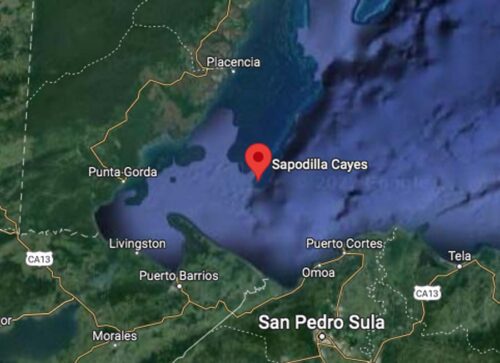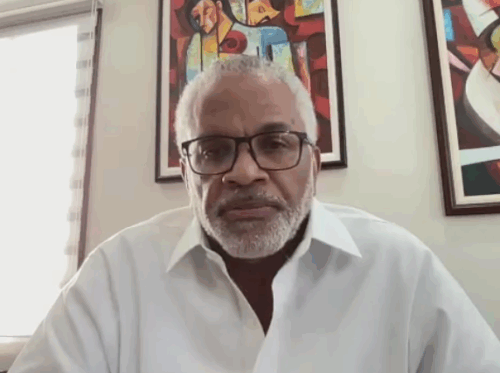
ICJ to hear Guatemala’s application to join Belize v. Honduras Sapodillas case in November
Hunting Caye located within the Sapodilla range ( Photo: courtesy TIDE)
BELIZE CITY, Mon. July 21, 2025
Belize instituted proceedings against Honduras regarding sovereignty over the Sapodilla Cayes at the International Court of Justice (ICJ) on November 16, 2022. It was not until over a year later, on December 1, 2023, that Guatemala applied for permission to intervene in the Belize v. Honduras proceedings. Today, the Ministry of Foreign Affairs informed the public that the ICJ will hear Guatemala’s application beginning Monday, November 24, 2025.

Sapodilla Cayes location
On January 26, 2023, the court brought together the agents and co-agents of both Belize (H.E. Assad Shoman and H.E. Alexis Rosado, respectively) and Honduras (Julio Antonio Rendón Barnica and María Gabriela Membreño Rápalo, respectively) to decide on dates for submissions. Belize had suggested it only needed three months to submit its Memorial, and recommended that Honduras be given four months to file its Counter-Memorial. Belize’s representative explained to the Court that the scope of the case is narrow, as the area in question is small and does not involve any issues of maritime delimitation. Shoman added that both Parties were familiar with the legal, factual and historical aspects of the case. However, Rendón stated that Honduras required sufficient time to conduct its own research, and requested that both parties be given 12 months to submit their filings. Belize responded that it would still be ready with its Memorial in three months’ time. The Court decided to set May 2, 2023, for the submission of the Memorial, and December 4, 2023, for the Counter-Memorial.

Eamon Courtenay – Former Foreign Minister
Former Foreign Minister Eamon Courtenay, who retains overall responsibility for Belize’s two cases at the ICJ, said that the Belize team did consider at length the possibility that the Court could entertain Guatemala joining the Belize v. Honduras case. He noted, though, the reason that Belize sued Honduras in the first place: “We were advised that in the Guatemala against Belize case, the Court would not determine sovereignty over any area where any third party had either announced that they had a claim or it came to the attention of the Court that there’s a claim by a third country to some area,” he said. Beyond that, Courtenay added that to leave the issue unresolved “would be a significant loss to the whole process because it would mean some subsequent case in the future” if, “at the end of the case between Guatemala and Belize, we would have the uncertainty as to where the maritime boundary is in the Gulf of Honduras.”
Courtenay admitted that the main consideration in deciding to institute the claim against Honduras was the issue of delay. He expressed disappointment “at the pace at which the court has handled the matter.” He revealed that they communicated with the Court “in diplomatic language of concern about the delay, and I think that it is because of our constant contact with the Court that we have finally gotten a date for this matter to be heard.” According to Courtenay, they had considered a delay of months in the submission of the pleadings, but they did not anticipate the delay would have been so long. He pointed out that another case that was submitted after Belize’s case has already been heard. He noted, though, that most recent emergency cases, for instance, those involving Ukraine v. Russia, South Africa v. Israel, and climate advisory opinions, and others have come off the docket of the Court’s emergency hearings, and so the Court is now moving back to its “main docket.”
Belize did not object to Guatemala joining the Sapodillas case; but Honduras did, which is why an oral hearing is now required. Courtenay explained that once Honduras has made its submissions to the Court on Guatemala’s application, Belize will determine if it puts forward “any strong arguments one way or the other”. He added, “Basically, I think the position that we will adopt is to assist the Court as best we can.”
Courtenay emphasized that the important thing is for the substantive Belize v. Honduras case to move forward and likewise the Belize/Guatemala case, though he clarified that the two are not joined, but are connected, and so, “for obvious reasons, they should be heard together.” Courtenay says they hope the Court will set the date for hearing in the Guatemala-Belize case, whether in 2026 or the following year, and then set the Belize v. Honduras case a week or two after, so that the judgments for both cases are also handed down around the same time.
In the case of Guatemala’s application to join the Belize v. Honduras case, Courtenay is hopeful that by the end of the year, the ICJ could have issued its decision so that the process moves forward in the substantive matter.
As to the strength of Belize’s case regarding sovereignty over the Sapodillas versus Guatemala, Courtenay indicated, “We strongly believe – and I say this from an informed position, that the evidence in respect of sovereignty over the Sapodilla Cayes and the cayes in that area is heavily weighted in favour of Belize. First point. Secondly, Guatemala – we have seen Guatemala’s argument. The evidence – we have seen that already in the case. We have [also] seen the Honduras claim and the basis on which they say they are entitled to sovereignty over the Sapodilla Cayes … There is the ability of the Court to pronounce on the maritime areas using the Law of the Sea, which provides some flexibility in the Court finding where to place the boundary based on special circumstances. The geographical configuration of the Bay of Honduras creates special circumstances. We believe, based on the advice from our experts, that when the Court comes to looking at those special circumstances, comes to looking at where the cayes actually are, where, what we believe should be the proper baselines to be used to project the maritime territory, that we would be in a very strong position.” Courtenay acknowledged, however, that “there is always litigation risk.” “I think the risk here is slim, but it is perhaps the area where we have put in the most resources. We have put in a lot of time and effort and expertise to ensure that we present the best case scenario to ensure that at the end of this process, both cases, that we maintain sovereignty over all the islands off our coast, including the Sapodilla Cayes,” he explained.
Asked whether the significance of the ecologically rich Crown Reef or Cayman Crown, located within the Sapodilla Cayes Marine Reserve, will play any role in the case, Courtenay believes it won’t have great legal significance. He explained that, though it is very rich in its biodiversity, “when it comes to defining boundaries in the maritime area of any country, you deal with land boundary that is projected out, and if there is any maritime rock or island outgrowing in the sea …” He does not believe that a submerged reef would be used as a factor to adjust a border.
Honduras articulated its claim to the Sapodilla Cayes in its Constitution of 1982. Belize is arguing that the range of cayes has formed part of Belize’s territory since the early 19th century, “initially as part of the settlement of Belize and later the colony of British Honduras, and since 1981 as part of the independent State of Belize.”
British Caribbean News


